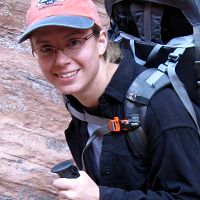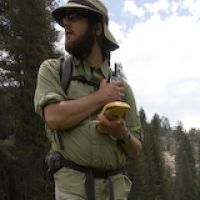Kerkez et al., 2011
Effects of evapotranspiration heterogeneity on catchment water balance in the Southern Sierra Nevada of California.
Kerkez, B., Kelly, A.E., Lucas, R.G., Son, K., Glaser, S.D., Bales, R.C. (2011)
Fall meeting, American Geophysical Union, December 2011, Room 2004, 9:15 AM - 9:30 AM. Abstract B41H-06.
-
Sierra, COLLABORATOR
-
Sierra, GRAD STUDENT
-
Sierra, GRAD STUDENT
-
Sierra, GRAD STUDENT
-
Sierra, INVESTIGATOR
-
Sierra, INVESTIGATOR
Abstract
Heterogeneity of Evapotranspiration (ET) is the result of poorly understood interactions between climate, topography, vegetation and soil. Accurate predictions of ET, and thus improved water balance estimates, hinge directly upon an improved understanding of the processes that drive ET across a wide spatio-temporal range. Recent warming trends in the Western US are shifting precipitation toward more rain-dominated patterns, significantly increasing vegetation water stress in historically snow-dominated regimes due to reduced soil moisture and increased vapor deficit during warm summer months. We investigate dominant controls that govern ET variability in a highly instrumented 1km2 mountain catchment at the Southern Sierra Critical Zone Observatory, co-located in the Kings River Experimental Watershed. Various ET estimates are derived from a number of measurement approaches: an eddy flux covariance tower, ET chambers, stream flumes, groundwater monitoring wells, matric potential sensors, as well as data from a distributed wireless sensor network with over 300 sensors. Combined with precipitation data, and high-density distributed soil moisture and snowdepth readings, the ET estimates are utilized to reconstruct the overall catchment water balance. We also apply the Regional Hydro-Ecologic Simulation System (RHESSys), a physically based, spatially distributed hydrologic model, to estimate water balance components. The model predictions are compared with the water budget calculated from field data, and used to identify the key variables controlling spatial and temporal patterns of ET at multiple scales. Initial results show that ET estimates are scale-, and vegetation-dependent, with significant ET variability between vegetation types and physiographic parameters such as elevation, slope, and aspect. In mixed conifer forests terrain, ET is more dependent on soil moisture, while in the meadows, where the soil is generally saturated for the duration of the growing season, ET is driven by micro-meteorological parameters and meadow vegetation phenology.
Citation
Kerkez, B., Kelly, A.E., Lucas, R.G., Son, K., Glaser, S.D., Bales, R.C. (2011): Effects of evapotranspiration heterogeneity on catchment water balance in the Southern Sierra Nevada of California. Fall meeting, American Geophysical Union, December 2011, Room 2004, 9:15 AM - 9:30 AM. Abstract B41H-06..
Explore Further






